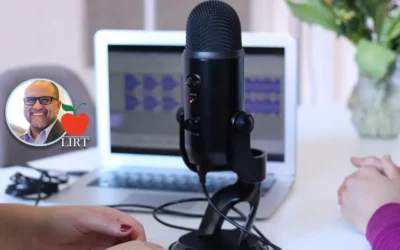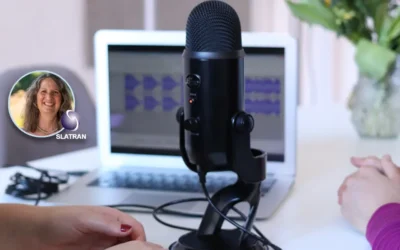Librarians and Technology Part 8: Active Reading and Focused Reference
Miriam Kahn, MLS, PhD
Active reading is an essential aspect of integrating technology and reference. Active reading focuses on the content of whatever is in front of you. It’s not dipping and skimming. It’s focusing on content and considering how to apply the information in a considered manner without distraction from technologies that aren’t information center tools.
Active Reading Supports Active Listening and Reference Queries
Active reading is an essential component of active listening to reference queries. Active reading entails focusing on the structure of reference and research materials to glean the critical elements of the hypothesis and argument and select the appropriate technology or information center tool. It’s a skill that’s taught to all librarians, archivists, and information professionals who use technology that ranges from monographs and serials, oral histories and audiovisual materials, to databases and search engines.
Active reading is key for harnessing technology to serve information seekers’ needs. It is a key component for drilling down to the core of an author’s argument and understanding the conclusion. Active reading requires undistracted time and focused attention to search elements, arguments, and critical details.
In contrast, using technology without a research plan, particularly when searching databases and using search engines, inhibits focused reference queries. Where the ideal reference search is laser focused, random searching which incorporates fuzzy logic or just surfing is often merely “quote shopping” or dipping and skimming for info that might agree with a basic premise or idea.
Diving into a reference query without a plan, without engaging active listening—while being pummeled by lots of distractions and random reading results—encourages skimming and dipping. In that distracted mode, online reading discourages active, critical reading and thinking.
Key Elements of Active Reading
Active reading is not reading for pleasure, not reading to absorb every word, but rather to harvest ideas. Also described as predatory reading, active reading means capturing the gist of the argument and supporting evidence. It entails getting to the meat of the article, book, study or web-based information so you can create abstracts and recommendations.
Active readers:
- Consider the type of document or source, report, article, monograph, dissertation, or webpage.
- Identify key components: abstract, introduction, chapter structure, or hierarchy of information; ancillary materials (figures, notes, bibliography, index); flyleaf or publisher’s materials; determine the organization’s or author’s credentials.
- Begin with the summary, abstract, introduction for a publication, or snippets for a webpage. Determine whether the source contains the type of information requested in the query.
- Read the front matter, abstract, introduction, and conclusion. Note the hypothesis or key argument and the evidence in the conclusion. Consider the resources and linked pages on a website.
- Examine the ancillary materials. Consider the types of sources used: primary or secondary materials; the extent of the bibliography; and precision of the index. Is the source for the website reputable, are resources appropriately cited?
- Note the internal content: does it support the argument and conclusion? Does it provide information for the researcher to explore? Is there enough information on the website to support your researcher’s needs?
Active Reading Means Focused, Minimal Note Taking
Active reading entails focused, precise, minimal note taking. After a complete citation of the source, write down the basic argument or thesis. Jot down key elements of the conclusion, subjects covered, similar studies referenced in the notes and bibliography or links. Enumerate the key points and arguments, pass the relevant information on to the researcher. Notes should be minimal, the length of a 200-word focused abstract.
During active reading, note how the material provides new information to answer the reference query. Do the retrieved materials contradict, support, or add to the body of material already retrieved by the researcher? Is there a key study that overlaps or builds upon earlier research? Include pertinent information in notes and abstracts.
Minimal note taking reinforces active reading by focusing the reference query upon salient facts and arguments. By assigning subjects and tags to each item retrieved, information professionals and researchers can then sort through studies and winnow out tangential materials. Continuing to focus active reading principles on the initial query minimizes distractions from technology and retrieval of irrelevant information.
Focus on the Topic, Minimize Distractions
Active reading requires concerted effort. It means focusing on the reference topic without letting technology distract with miscellaneous and off-target information. It’s so easy to perform a reference query using a search engine and find lots of miscellaneous information. Homing in on key resources requires focused attention to detail and active reading habits.
Look for key elements and terms in the search results. Stay focused on the topic. Actively read and digest reports, executive summaries, and abstracts looking for targeted subject terms and topics. Having problems staying focused? Turn off all non-essential tabs on your browser including your e-mail, social media, and news feeds while you are performing reference queries and practicing actively reading. The fewer distractions from stray technology, the more you’ll avoid locating the same information over and over again.
Summing it Up
Active reading takes practice and forces distracting technology into the background. Active reading is hard work and requires discipline to harness technology. Applying the principles of active reading enhances focus on key elements and ideas, shifting distracting technology, social media, and news feeds, supporting documentation, and tangential examples into the background.
Active reading sharpens reference and retrieval skills to drill down to requested information and eliminate distracting noise that’s not part of information center tools and technology.
This week’s recommended article on focus:
Anna Goldfarb, “Stop Letting Modern Distractions Steal Your Attention” NYT (March 26, 2019): NOTE: Contains very distracting video clips and ads.
My next blog post will examine Focused Writing.
Miriam Kahn, MLS, PhD
Miriam B. Kahn, MLS, PhD provides education and consulting for libraries, archives, corporations, and individuals. See Miriam’s pieces for Lucidea covering library technology and skills for special librarians. Read her previous post on embracing focus and increasing productivity.
Similar Posts
Interview with Victor Baeza about ALA’s Library Instruction Round Table
Interview with Victor Baeza, President of LIRT, about how it benefits from and supports special librarians whose roles involve teaching or training.
Interview with Eugene Giudice, SLA Treasurer
Interview with SLA’s Treasurer about the future of the special library profession and how the Special Libraries Association can benefit librarians
Interview with Cara Marcus on Transportation Librarianship and SLA
Interview with Cara Marcus, the president of the Special Libraries Association (SLA) transportation community about transportation libraries and SLA
Interview with Christian Nappo on the National Librarians of Medicine
Interview with the author of a reference-ready book on the twenty-seven men and women who headed the National Library of Medicine.
Hosting service
Enjoy all of the benefits of your Lucidea solution with secure, reliable, stress free hosting
Programs & incentives
No matter your size or budget, we’ve got you covered, today and tomorrow




Leave a Comment
Comments are reviewed and must adhere to our comments policy.
0 Comments